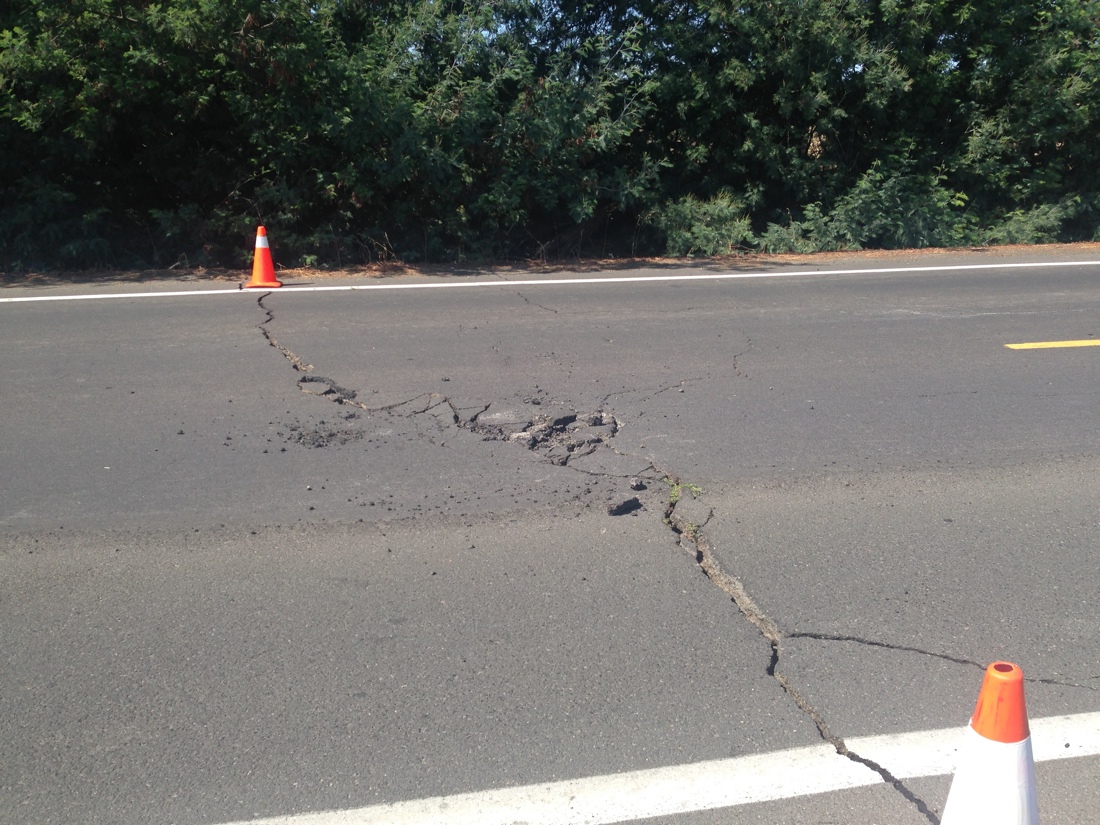Seismic Roundup: 2014 Saw Fewer Big Earthquakes Than 2013

This story was updated at 10:14 a.m. ET on Jan. 14.
Twelve large earthquakes shook the globe in 2014, seven fewer than in 2013, according to a final tally of the year's temblors by the U.S. Geological Survey.
The numbers are "pretty normal," said University of Washington professor and Washington state seismologist John Vidale, though the quake data do provide some insight into the relatively recent trend of small and moderate earthquakes that have been linked to the drilling of oil wells.
First, the raw numbers: At 12 quakes, the past year tied with 2008 for the number of earthquakes with a magnitude of 7.0 or higher. Eleven of those 2014 quakes had magnitudes between 7.0 and 7.9, while the biggest quake of the year came in at magnitude 8.2. That shaker hit Iquique, Chile, on April 1, triggering a 7-foot-high (2.1 meters) tsunami.
However, the deadliest quake of 2014 was far smaller. On Aug. 3, a magnitude-6.1 earthquake hit Ludian Xian in the Chinese province of Yunnan. That quake killed 617 of the 664 people who died in earthquakes worldwide in 2014. Poorly constructed, unreinforced buildings were a major factor in the high fatality rate during the Yunnan quake. [The 10 Biggest Earthquakes in History]
The largest earthquake in the United States hit the Aleutian Islands of Alaska on June 23. It was recorded as a magnitude of 7.9, making it the second-biggest quake of the year globally. The quake generated a 6-inch-high (15 centimeters) tsunami nearby, but there was little damage in the remote, sparsely populated region.
The most noticeable quake for Americans was likely the Aug. 24 temblor that hit southern Napa Valley, California, with a magnitude of 6.0, said Vidale, who is not affiliated with the USGS. Though the quake was responsible for only one death, it was felt by tens of thousands of people — and, Vidale said, it provided a test of an early-warning system called the ShakeAlert system.
Get the world’s most fascinating discoveries delivered straight to your inbox.
Researchers at the University of California, Berkeley, Caltech, the USGS and the University of Washington (Vidale included) are working to develop a network of seismic stations that can detect earthquake waves and give people a warning that shaking will begin a few seconds before it does. Those precious few seconds could give potential quake victims time to move to a safe location; ultimately, the system could also be able to automatically stop elevators and trains such as San Francisco's BART system.
ShakeAlert is not yet available to the public, but it is currently being tested by some laboratories and agencies.
"If BART were running [at the time of the Napa Valley earthquake], it would have shut it down," Vidale said. (The quake hit early in the morning, before the trains' scheduled service.)
Elsewhere in the country, areas not used to earthquakes found themselves experiencing them last year — albeit mostly with very mild shaking. There were several moderate earthquakes (below magnitude 5.0) in Oklahoma, Texas, Kansas, Arkansas and Arizona in 2014, the USGS reported. Though some may have been naturally occurring, others could have been caused by oil drilling activities, as with a magnitude-5.7 quake that hit Prague, Oklahoma, in 2011, triggered by a wastewater injection well.
Induced earthquakes from oil drilling "is certainly what is driving a lot of the seismological community," Vidale said. Because most of the quakes are small, "it's not at all clear it's very dangerous yet, so that's something we have to look into."
On average, the USGS records 14,500 earthquakes a year of magnitude 2.5 or greater in the U.S. and magnitude 4.0 or greater internationally. Since 1900, about 18 quakes a year are magnitude 7.0 or higher, according to the agency.
Editor's Note: This story was updated to correct the magnitude of the earthquake that hit Prague, Oklahoma.
Follow Stephanie Pappas on Twitter and Google+. Follow us @livescience, Facebook & Google+. Original article on Live Science.

Stephanie Pappas is a contributing writer for Live Science, covering topics ranging from geoscience to archaeology to the human brain and behavior. She was previously a senior writer for Live Science but is now a freelancer based in Denver, Colorado, and regularly contributes to Scientific American and The Monitor, the monthly magazine of the American Psychological Association. Stephanie received a bachelor's degree in psychology from the University of South Carolina and a graduate certificate in science communication from the University of California, Santa Cruz.


